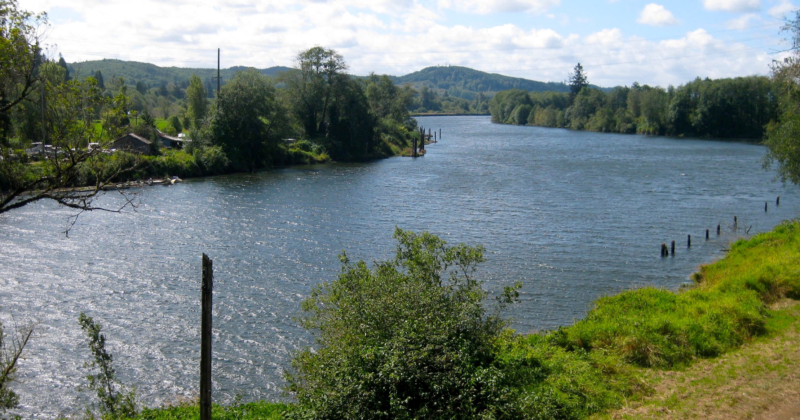This op-ed was published in The Chronicle (Centralia) on February 15, 2021 by Tyson Johnston, vice president of the Quinault Indian Nation, and Larry Lestelle, a consulting fisheries biologist to the Quinault Indian Nation who has worked for more than 40 years on salmon management and habitat restoration.
By cherry picking data from recent state paid surveys and a draft federal environmental study, the recent editorial in the The Chronicle drastically downplayed the potential impacts on salmon and steelhead of the proposed dam on the upper Chehalis River.
It is true that spring Chinook have returned to the upper river in very low numbers in recent years, but the same fish surveys found that significant numbers of adult fall Chinook, coho and steelhead returned to the dam’s impact area where “spawning occurred almost continuously from September through June.”
Selective presentation of data to justify building a dam is exactly the kind of thinking that led us to the current salmon crisis in Washington.
The Quinault Indian Nation has watched for decades as salmon have suffered death by a thousand cuts as their habitat has been sacrificed one piece after another after another. The impact of developments that block, pollute or pave over salmon habitat may seem like barely a rounding error individually, but taken together they can add up to extinction.
Salmon and steelhead runs across the state are at a tipping point as thoroughly documented by the Governor’s Salmon Recovery Office in its recent report saying, “Washingtonians stand at a fork in the road with a clear choice: continue with current practices and gradually lose salmon, orcas and a way of life that has sustained the Pacific Northwest for eons.”
Given how hard the Quinault Indian Nation has fought to exercise its treaty rights to fish, and the precarious state of salmon, the Nation cannot support a status quo that keeps chipping away at the habitat salmon need to survive and someday thrive once again.
The Governor’s State of the Salmon report underscores that habitat protection and restoration represent our best chance to reverse the decline of salmon. That’s why more than 75% of the $1 billion the state has invested in salmon recovery has gone to habitat acquisition and restoration.
The Upper Chehalis River where the dam would be built is relatively undeveloped and offers one of the better habitat restoration opportunities in the entire state. Especially for spring Chinook. The upper river historically was one of three strongholds in the Chehalis Basin for springers.
Salmon strongholds are not just places where fish are found in large numbers: they are also keepers of the genetic and spatial diversity that make salmon so resilient and able to adapt to changes in their environment. Creating the conditions salmon need to rebuild that diversity is just as important to recovery as boosting their numbers.
The state of Washington’s Draft Environmental Impact Statement (DEIS) found that the dam poses “significant impacts from both construction and operation.” The Quinault Indian Nation found, based on independent scientific analysis, that both the state and federal government studies dramatically underestimate the dam’s impacts.
Despite dam backers’ assertions, the proposed Chehalis dam and temporary reservoir would have most of the same catastrophic effects on fish as a typical dam.
As we continue to evaluate the potential impacts of the dam on aquatic species, and whether it can deliver on the flood damage reduction benefits it promises, we need to acknowledge the trade-offs honestly. And let’s also give full and fair consideration to alternatives to a dam for reducing flood damage.

